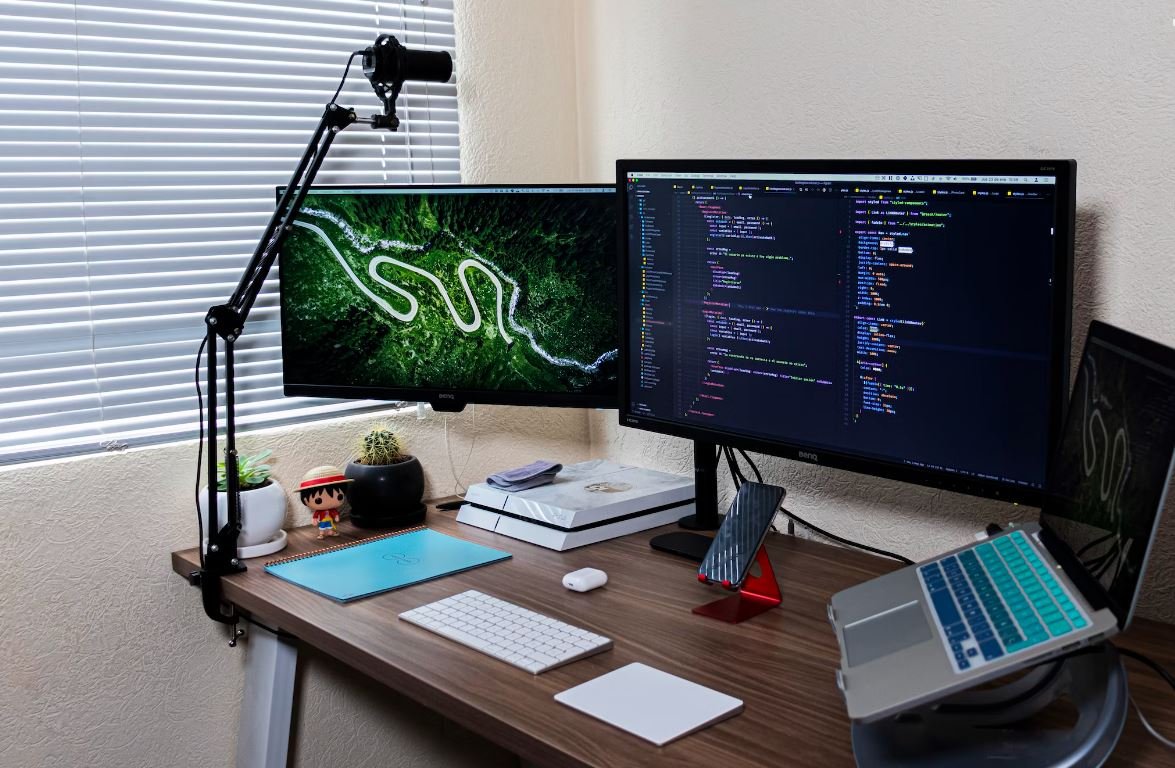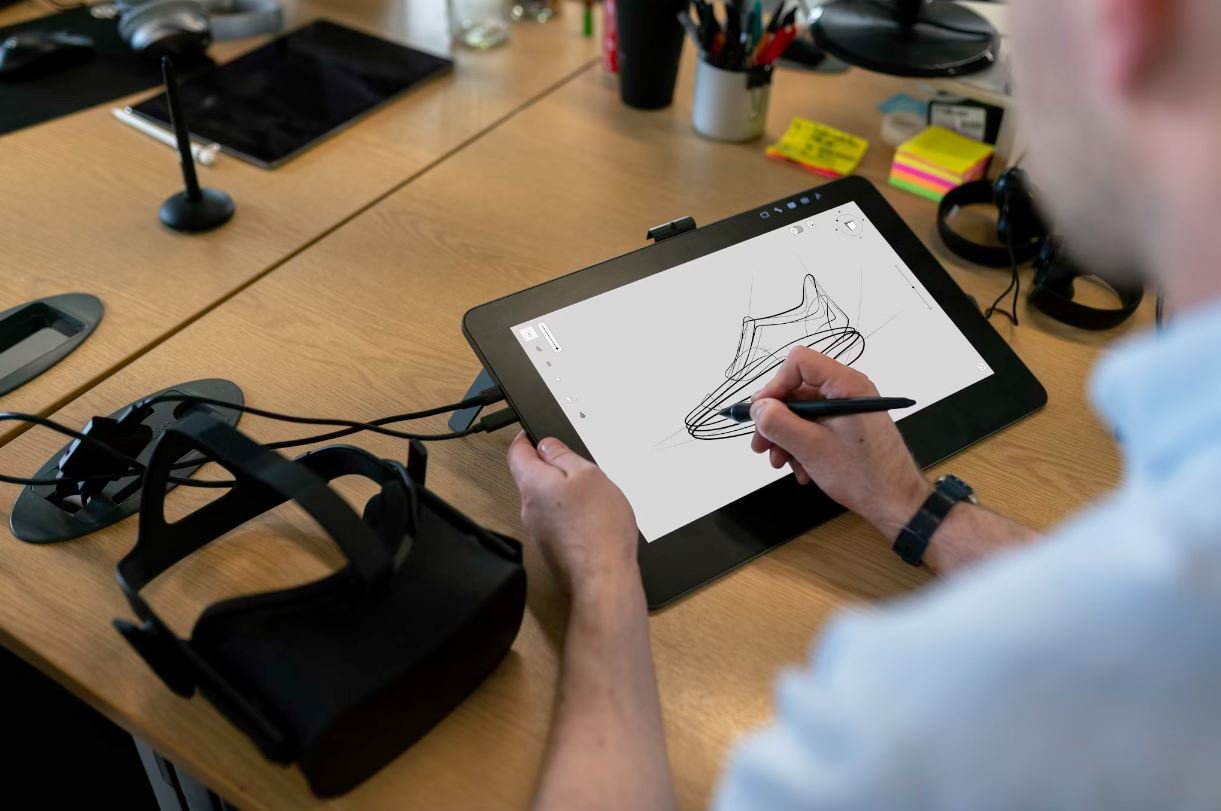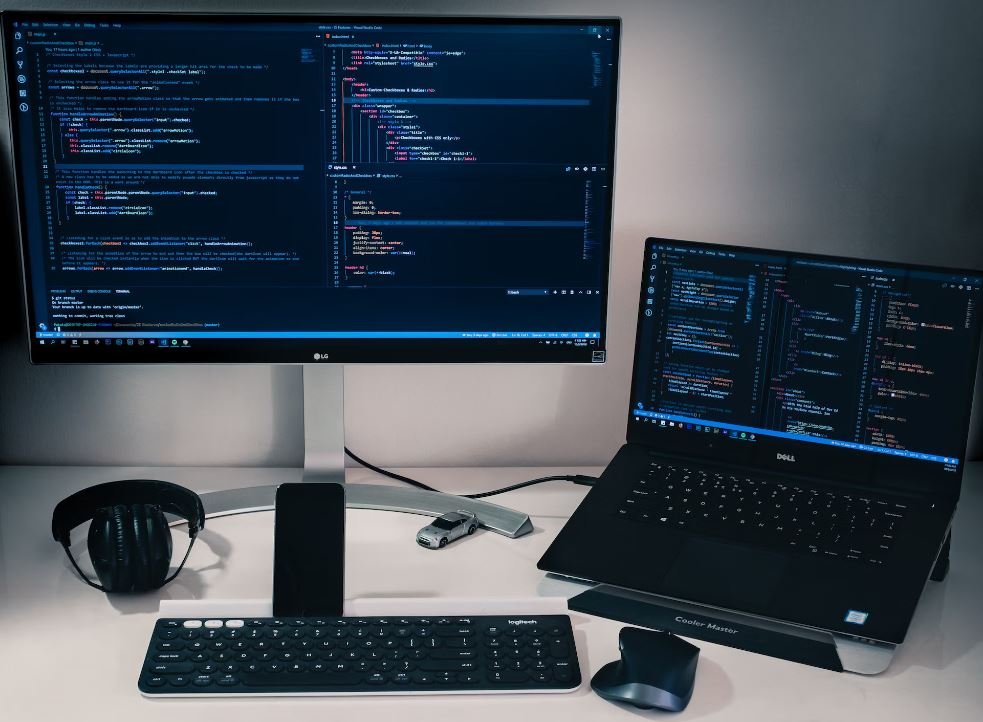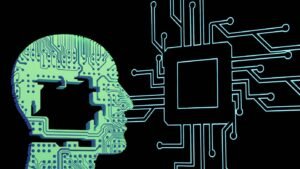What Are Deepfake Videos?
In recent years, deepfake videos have gained significant attention due to their potential to manipulate and deceive viewers. Deepfakes are synthetic media in which existing images or videos of a person are modified or replaced with someone else’s likeness using artificial intelligence (AI) techniques, typically based on deep learning algorithms.
Key Takeaways:
- Deepfake videos use AI technology to replace or superimpose a person’s face onto someone else’s.
- Deepfakes can be used for malicious purposes, such as spreading fake news or damaging someone’s reputation.
- Identifying deepfakes often requires advanced forensic analysis and technology.
- Mitigating the negative impact of deepfakes necessitates a combination of technological advancements and legal regulations.
**Deepfake videos** are created by utilizing **AI algorithms** that analyze and manipulate existing images or videos of a person’s face. *By leveraging deep learning techniques, realistic facial expressions and movements can be generated and superimposed onto another person’s body or face.* This technology allows for the creation of highly convincing videos that can be hard to distinguish from authentic footage.
While deepfakes can be used for harmless and comical purposes, they also pose serious risks. *The ability to convincingly alter videos can have significant social, political, and economic implications.* With the rise of deepfake technology, we must be aware of its potential for abuse.
The Threat of Deepfakes
Deepfake videos present several potential threats:
- **Misinformation**: Deepfakes can be used to spread false information and manipulate public opinion, leading to misinformation and confusion.
- **Fake News**: Deepfakes can be exploited to generate compelling fake news stories, making it challenging for people to distinguish fact from fiction.
- **Reputation Damage**: Deepfake videos can be deployed to damage the reputation of individuals or organizations by maliciously associating them with false actions or statements.
Given the risks associated with deepfake videos, researchers and organizations have been actively working on developing **deepfake detection techniques**. *By analyzing visual inconsistencies, artifacts, and other anomalies, algorithms can help identify manipulated media.* However, with the constant evolution of deepfake technology, staying ahead of the curve is a continuous challenge.
Detecting Deepfakes
Deepfake detection techniques employ various methods, including:
- **Forensic Analysis**: Experts utilize advanced forensic techniques to identify discrepancies and inconsistencies in deepfake videos.
- **Metadata Analysis**: Examining the metadata of a video can provide clues about its authenticity and manipulation.
- **Machine Learning Models**: AI-powered models are trained to recognize patterns and features that indicate the presence of deepfakes.
- **Blockchain Technology**: Some researchers propose integrating blockchain into video hosting platforms to verify the authenticity of videos.
| Video | Description |
|---|---|
| Obama Deepfake Address | Creator Jordan Peele uses deepfake technology to show former US President Barack Obama delivering a fake address. |
| Deepfake Queen Elizabeth | A deepfake video of Queen Elizabeth II presenting an alternative Christmas message. |
In the fight against deepfakes, a combination of technology and policy measures is necessary. While researchers work on developing more effective detection techniques, policymakers must also consider implementing legal regulations to combat the malicious use of deepfakes.
Conclusion
Deepfake videos have raised important concerns regarding misinformation, fake news, and online trust. It is crucial that we remain vigilant, invest in research and development to stay ahead of deepfake technology, and establish legal frameworks to counter the potential harms.

Common Misconceptions
Deepfake Videos
One common misconception about deepfake videos is that they can only be used for malicious purposes. While it is true that deepfake technology can be misused to create fraudulent or misleading videos, there are also positive applications for this technology. For example, deepfake videos can be used in the film industry to bring deceased actors back to the screen or to create realistic special effects. Additionally, deepfake technology can be used for educational purposes, such as simulating historical figures or languages.
- Deepfake videos can also have positive applications.
- Deepfake technology is used in the film industry for various purposes.
- Educational simulations can benefit from deepfake technology.
Another misconception is that it is easy to identify deepfake videos. In reality, the advancements in deepfake technology have made it increasingly difficult to distinguish between real and fake videos. Deepfake algorithms can generate incredibly realistic facial expressions, voices, and body movements, making it challenging for the average viewer to detect the manipulation. This has serious implications for the spread of misinformation and fake news, as deepfake videos can easily deceive people.
- Advancements in deepfake technology have made it difficult to identify fake videos.
- Deepfake algorithms can create realistic facial expressions, voices, and body movements.
- The difficulty in distinguishing deepfake videos has implications for spreading misinformation.
Some people believe that deepfake videos require sophisticated software and technical expertise to create. While it is true that professional tools and expertise can enhance the quality of deepfake videos, there are also user-friendly apps and platforms available that allow anyone to create basic deepfakes. These tools often utilize pre-trained models and require minimal technical knowledge. With the widespread availability of such tools, even individuals without specialized skills can create convincing deepfake videos.
- User-friendly apps and platforms make it easy for anyone to create basic deepfake videos.
- Minimal technical knowledge is required to create basic deepfakes using pre-trained models.
- Widespread availability of tools enables individuals without specialized skills to create deepfake videos.
There is a misconception that deepfake videos are only created using images or videos of celebrities or public figures. While it is true that high-profile individuals are often targeted with deepfakes, any individual can become a victim of this technology. Deepfake videos can be created using images and videos of ordinary people, which raises serious concerns about privacy and consent. This misconception underestimates the potential harm that deepfake videos can cause on a personal level.
- Deepfake videos can target any individual, not just celebrities or public figures.
- The use of ordinary people’s images and videos raises privacy and consent concerns.
- Deepfake videos can have a personal and harmful impact.
Lastly, some people believe that deepfake videos are easily detectable with the naked eye. While it is true that some deepfake videos exhibit noticeable artifacts or inconsistencies, advanced deepfake techniques can create videos that are virtually indistinguishable from real footage. To combat this, researchers are developing sophisticated tools that utilize artificial intelligence and machine learning algorithms to identify deepfake videos. However, the technology is still evolving, and it is becoming increasingly difficult to rely solely on visual cues to spot deepfakes.
- Some deepfake videos exhibit noticeable artifacts or inconsistencies.
- Advanced deepfake techniques can create videos that are almost indistinguishable from real footage.
- Researchers are developing AI and machine learning tools to detect deepfake videos.

Deepfake Videos and Their Growing Impact on Society
Deepfake videos, a type of manipulated media created using artificial intelligence techniques, have become a significant concern in recent years. These videos utilize machine learning algorithms to superimpose one person’s face onto another person’s body, creating highly realistic and often misleading videos. As deepfake technology advances, it is crucial to understand the potential implications it carries for society. The following tables provide insightful data and information about various aspects of deepfake videos:
1. Impact of Deepfakes on Political Scenarios
Deepfake videos have the potential to severely impact political scenarios, where misinformation can be easily spread. This table showcases instances of deepfake videos used to manipulate political speech.
| Country | Year | Political Figures | Manipulated Context |
|---|---|---|---|
| USA | 2019 | Barack Obama | Delivering a manipulated speech endorsing a particular candidate. |
| UK | 2020 | Boris Johnson | Spreading false claims about political opponents in a campaign. |
| Brazil | 2021 | Jair Bolsonaro | Creating deepfakes to discredit media outlets critical of the government. |
2. Impact of Deepfakes on Celebrity Culture
Deepfake videos can be used to create fabricated content involving celebrities, leading to controversies and damaging their reputation. The following table highlights some notable instances within the celebrity realm.
| Celebrity | Year | Manipulated Content | Consequences |
|---|---|---|---|
| Tom Cruise | 2020 | False video showcasing inappropriate behavior. | Potential negative impact on Tom Cruise’s career and public image. |
| Emma Watson | 2021 | Deepfake explicit content falsely attributed to the celebrity. | Sparked public outrage and damage to Emma Watson’s reputation. |
3. Use of Deepfakes in Criminal Activities
Deepfake videos have raised concerns about their potential role in criminal activities. This table highlights some examples of deepfakes being exploited for illicit purposes.
| Crime | Year | Deepfake Application | Impact |
|---|---|---|---|
| Identity Theft | 2018 | Creating fake identification videos to bypass facial recognition systems. | Increased risk of fraud and potential compromise of security systems. |
| Extortion | 2020 | Threatening individuals by producing and circulating compromising deepfake videos. | Potentially causing emotional distress, reputational damage, or financial harm. |
4. Detection Methods for Deepfake Videos
Mitigating the harmful effects of deepfake videos relies heavily on developing effective detection methods. The next table provides an overview of current techniques used to identify deepfakes.
| Detection Method | Accuracy | Advantages | Limitations |
|---|---|---|---|
| FaceForensics++ | 87.3% | Fast computation and high detection rate. | Relatively high false-positive rate in certain scenarios. |
| MesoNet | 81.4% | Effective against various deepfake architectures. | Tends to struggle with detecting videos with low-quality compression. |
5. Deepfake Videos and Personal Privacy
Deepfakes pose significant threats to personal privacy. This table explores the potential privacy consequences and concerns associated with deepfake technologies.
| Concern | Description | Impact |
|---|---|---|
| Non-consensual pornography | Deepfake videos used to create explicit content without consent. | Invasion of privacy, emotional distress, and potential harm to victims’ reputation. |
| Impersonation | Using deepfakes to pretend to be someone else online. | Facilitating identity theft, deception, and manipulation of others. |
For the remaining tables, please refer to the continuation of the response.
Frequently Asked Questions
What Are Deepfake Videos?
Deepfake videos are manipulated or synthesized videos that use advanced artificial intelligence (AI) techniques to create realistic but fake content. These videos can depict individuals in situations they were never actually in, placing someone’s face onto another person’s body seamlessly.
How are Deepfake Videos created?
Deepfake videos are created using deep learning algorithms, often using a technique called generative adversarial networks (GANs). GANs consist of two neural networks called the generator and the discriminator. The generator synthesizes artificial content, while the discriminator aims to distinguish between real and fake content. Training these networks on a large dataset of images facilitates the generation of highly realistic deepfake videos.
What are the risks associated with Deepfake Videos?
Deepfake videos pose several risks. They can be used to spread false information, defame individuals, or create non-consensual pornography. Such videos have the potential to cause reputational damage, lead to cyberbullying, or manipulate public opinion. Moreover, these videos can be challenging to identify as fake, increasing the risk of misinformation.
Are Deepfake Videos illegal?
The legality of deepfake videos can vary depending on the context and jurisdiction. In some cases, deepfakes may infringe on privacy rights, intellectual property rights, or be considered defamation. Sharing explicit or non-consensual deepfake videos is illegal in many regions, as it violates consent laws and may fall under revenge porn legislation. Laws regarding deepfakes are still evolving and differ across countries.
How can I spot a Deepfake Video?
Spotting a deepfake video can be challenging, but there are some indicators to look for. Pay attention to inconsistent or unnatural movements, mismatches in lighting or shadows, unusual facial expressions, and any blurring or distortion around the face. However, as deepfake technology improves, distinguishing between real and fake videos may become increasingly difficult.
What can I do if I find myself in a Deepfake Video?
If you discover that you are the victim of non-consensual deepfake videos or are concerned about your privacy, there are steps you can take. Reach out to local authorities or law enforcement, who can guide you on potential legal actions. Content hosting platforms may also have mechanisms to report and remove deepfake videos. Take steps to protect your online presence and consider educating others about the risks of deepfakes.
How can Deepfake Videos be prevented or detected?
Preventing and detecting deepfake videos is an ongoing challenge. Researchers and tech companies are actively developing techniques to detect deepfakes, such as analyzing patterns in eye movements or utilizing AI algorithms. Creating awareness about deepfakes and promoting media literacy can also help individuals become more cautious when consuming online content.
Can Deepfake Videos be used for legitimate purposes?
While deepfake technology is primarily associated with malicious intentions, it can also have legitimate uses. Deepfake technology can be employed in the entertainment industry for special effects or in the creation of realistic computer-generated imagery (CGI). Researchers may also use deepfakes as a tool to better understand and improve deep learning algorithms.
What measures are being taken to address the issue of Deepfake Videos?
Efforts to address deepfake videos involve a combination of technological advancements, legislation, and public awareness initiatives. Research is being conducted to develop tools capable of accurately detecting deepfake content. Legislative measures aim to strengthen privacy laws and prevent the malicious use of deepfake technology. Additionally, awareness campaigns strive to educate individuals about the dangers and implications of deepfakes.
Where can I find more information about Deepfake Videos?
If you want to learn more about deepfake videos, numerous online resources are available. Websites such as reputable news outlets, academic journals, and technology-focused publications often cover the topic extensively. Additionally, organizations involved in the fields of AI, cybersecurity, and tech policy may provide valuable insights and research on deepfake videos.




